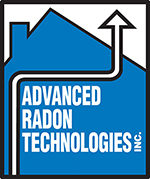How to Reduce Radon
Contact Us For A Free Quote
How It Works
You can’t see radon. And you can’t smell or taste it. But it may be a problem in your home.
Radon is estimated to cause many thousands of deaths each year. That’s because when you breathe air containing radon, you can get lung cancer. In fact, the Surgeon General has warned that radon is the SECOND leading cause of lung cancer in the United States today.
Radon gas decays into radioactive particles that can get trapped in your lungs when you breathe. As they break down further, these particles release small bursts of energy. This can damage lung tissue and lead to lung cancer. Not everyone exposed to elevated levels of radon will develop lung cancer. And the amount of time between exposure and the onset of the disease may be many years.
Radon is a radioactive gas. It comes from the natural decay of uranium that is found in nearly all soils. It typically moves up through the ground to the air above and into your home through cracks and other holes in the foundation. Your home traps radon inside, where it can build up. Any home may have a radon problem. The means new and old homes, well-sealed and drafty homes, and homes with or without basements. 60% – 70% of homes in Spokane and 60% – 80% of homes in Northern Idaho are estimated to have elevated radon levels.
If you have performed a single test in your home, the US EPA recommends a follow up test before fixing or selling your home. Radon levels fluctuate naturally, so it’s important to ensure the previous test results are still an accurate assessment, weather conditions directly impact radon levels, so testing during extreme cold or high winds may not produce accurate results. If you’ve already had a follow up test and you need to reduce the radon levels, you have a number of options.
Hire Advanced Radon Technologies professional, licensed radon mitigation specialists. Our techniques for homes, schools, and commercial buildings are straightforward and can be done in one day by a qualified contractor for a typical single family residence.
Radon reduction requires sealing that is done in conjunction with other mitigation steps. Active soil depressurization is a cost-effective and reliable technique for radon reduction. It collects radon from beneath the building before it can enter. Depending upon the design of the building, simple or complex systems are used. Every system draws the radon-laden soil gas from beneath the foundation and exhausts it outside of the building, far away from windows and other openings that it will not reenter.
A plastic pipe is connected to the soil through a hole in a slab floor, a sump lid connection, or beneath a plastic sheet within a crawl space. The pipe is connected to a quiet, constantly operating fan which discharges the radon outdoors.
Advanced Radon Technologies:
Radon Mitigation Services
Services
Real Estate Services

